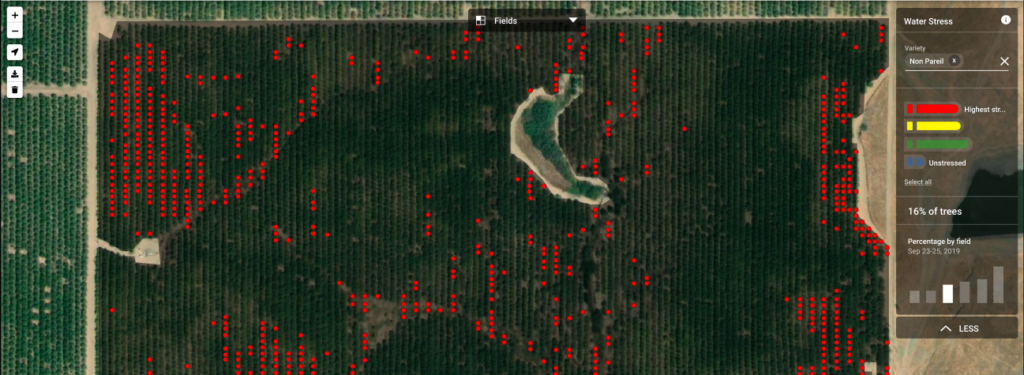
Summer 2021
Plant Level Insights: The next leap in precision monitoring
Growers resources, such as water and nutrients, are often stretched thin, and as these types of issues increase in the wake of input-heavy farming and climate change, precision has become the focus-du-jour. And as far as the industry has come in terms of precision (and it has come a long way), it has a ways to go.
John Bourne, vice president of marketing at Ceres Imaging, is confident that Ceres has the next step in precision agriculture with its new Plant Level Insights (PLI), which recently rolled out for select crops for the 2021 growing season.
For the first time, growers are able to track and monitor each individual plant.
“A lot of folks define precision ag as the ability to farm at a per-plant level, but then be able to have it be user-friendly enough to ladder up,” said Bourne. “So growers can make management decisions across their entire operation, but still farming at that per plant level, and getting data on each individual plant.”
That is what Plant Level Insights is – a way for growers to understand how each individual plant is performing, allowing them to make really good quantitative-based decisions based on changes over time or the scale of an issue, depending on the number of plants affected and how severely.
How it works
PLI uses a combination of remote sensing, such as Ceres’ in-field and aerial data, and proprietary processing and algorithms, which feature both artificial intelligence (AI) and crop models, to measure each plant individually throughout an orchard. Using a type of AI called convolutional neural networks, which is used in image processing, PLI is able to look at a crop’s per plant information.
The images classify individual plants and separate them from things like soil, grass and ground cover, or shadow from a crop. When growers measure chlorophyll content or water stress – two things Ceres is able to see at a plant level – growers are only looking at the data from that plant, not getting busy noise from other things like ground cover.
In a basic sense, the system identifies and creates a model on each individual plant, which is then followed by a very high resolution separation of other signals. When the software then creates the index of the plant a grower is monitoring, like a chlorophyll or water stress index, the information is being constructed on a per plant level.
“Then growers are able to look and compare trends and assess information on a per crop basis,” said Bourne. “Growers can say they only want to look at their most highly stressed plants, and they can toggle off anything other than that, giving them the visual and quantitative overview of their highest stressed crops.”
If growers want to see changes or trends that occurred week over week, or where crops went from no stress to high stress, they can, allowing them to quantify and make management decisions based on the number of plants, as opposed to seeing general areas that are or are not stressed. For some crops with varieties, the plants can be sorted to look at stress by variety, which growers can use to dive beyond visuals and more deeply into the tracking of that data.
“Growers could say, ‘What percentage of my Nonpareils are highly stressed?’ And it could say 80%, or even how many Nonpareils to that level,” Bourne said.
This is done through the Ceres imagery and dashboard interfaces.
The roll out
A year of intensive field trials wrapped with Australia’s growing season, and is now being released across the U.S. in line with this year’s growing seasons. And while it may seem extra useful during the hotter months in terms of plant water stress, its use in the beginning of any season is particularly important in irrigation management and spotting issues before they can impact yield. This also allows for a grower’s quick action in correcting problems.Plant Level Insights is being rolled out crop by crop, with it currently being available to tree fruit and tree nut growers across the U.S. and Australia, with grape growers following closely behind. It has been well-received thus far among growers who have implemented it.
“It’s been really exciting,” said Bourne. “It’s finally allowed growers to focus on what matters most, and in a language that growers use. Being able to say something like, ‘These eight trees are highly stressed’ allows growers to make this data a lot more actionable.”
He also said the tech signals something much bigger.
“We’re not in the context phase (of precision) anymore, we’re actually doing it. We’ve arrived,” Bourne said. “Plant Level Insights signals the next evolution, and this technology helps us get there.”
The majority of Ceres customers have decided to upgrade to Plant Level Insights, giving indication of its popularity. Currently, the company’s imaging is being used on 20-40% of tree nut acres in the Western U.S., depending on the crop, and about 20% of fruit tree acreage.







